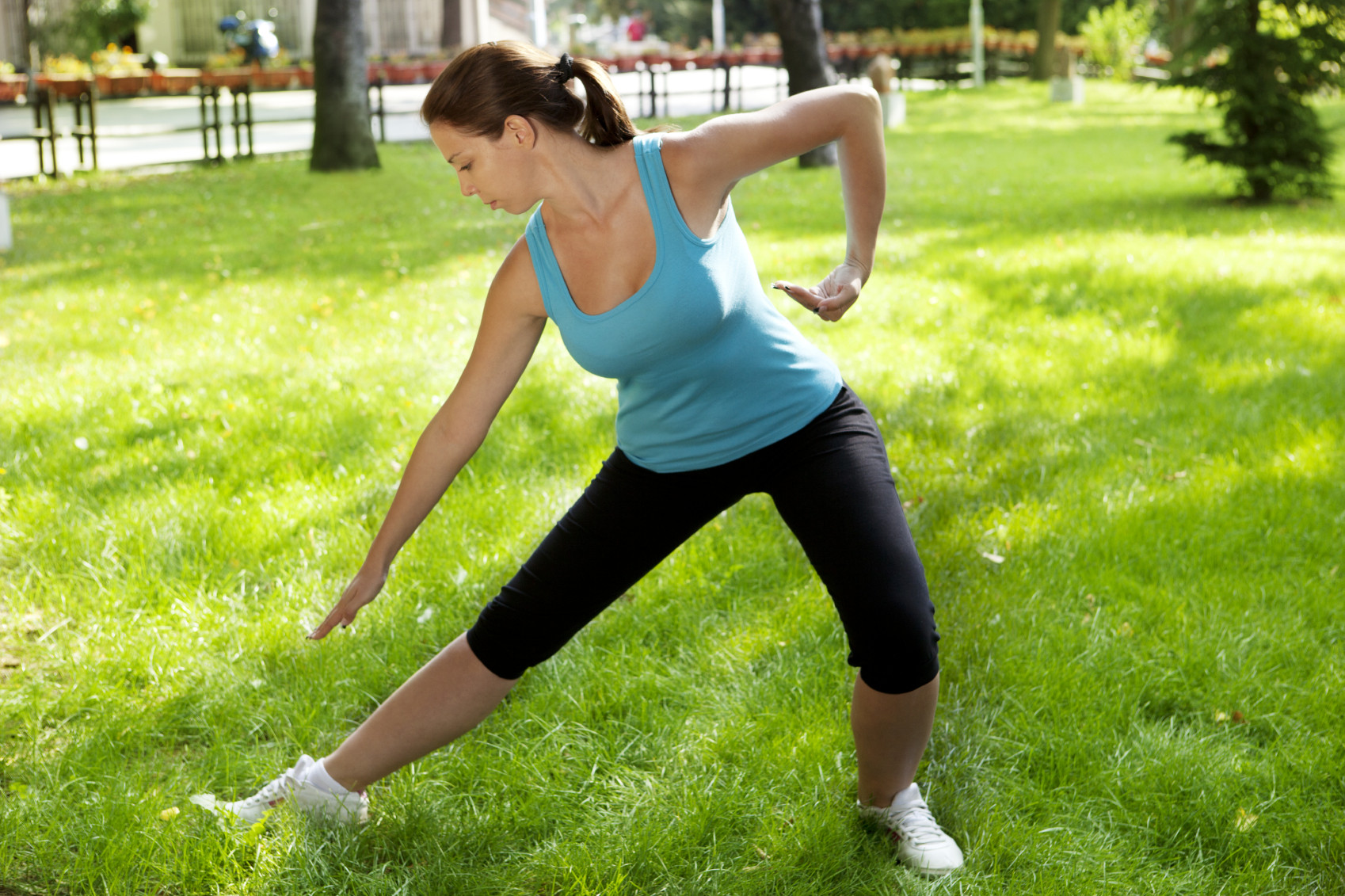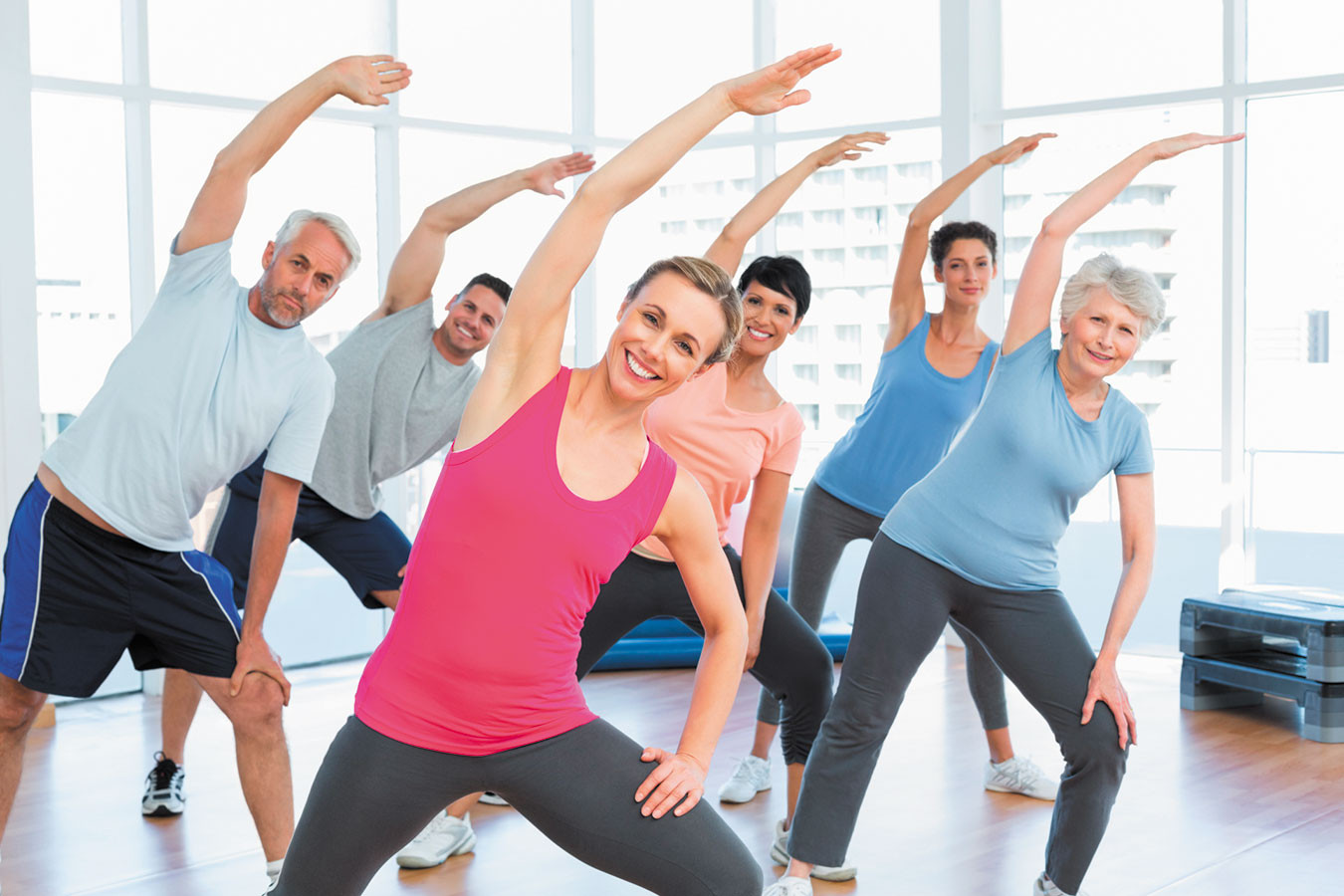
5 timeless habits for better health

What are the symptoms of prostate cancer?

Is your breakfast cereal healthy?

When pain signals an emergency: Symptoms you should never ignore

Does exercise give you energy?

Acupuncture for pain relief: How it works and what to expect

How to avoid jet lag: Tips for staying alert when you travel

Biofeedback therapy: How it works and how it can help relieve pain

Best vitamins and minerals for energy

Should you take probiotics with antibiotics?
Exercise & Fitness Archive
Articles
Tai chi can improve life for people with chronic health conditions
Tai chi has become popular in the United States in recent years, thanks in part to growing evidence for its many health benefits. This ancient Chinese exercise not only improves balance and flexibility, it may prevent falls, ease pain, and even help your heart. A recent analysis of 33 studies of tai chi suggests that doing tai chi can help older adults with common, long-term health conditions move about more easily and enhance their quality of life. The quality of life improvements may stem from the meditative, mind-calming aspects of tai chi.
Vigorous exercise may counter cognitive decline in early Alzheimer's
Reports at the Alzheimer's Association International Conference in July 2015 verified that women are at higher risk than men for developing Alzheimer's, and also progress more rapidly from mild cognitive impairment to out-right dementia than men do. But not all the news was bad. A study reported at the meeting indicates that physical exercise can halt, and even reverse, the decline in people with mild cognitive impairment.
In that study, conducted by researchers at Wake Forest University in North Carolina, 65 previously sedentary women and men with mild cognitive impairment exercised at peak capacity for at least 45 minutes four times a week for six months. At the beginning and end of the study, researchers tested participants' cognitive skills and examined their blood and cerebrospinal fluid for levels of tau protein—a principal component of the amyloid plaques associated with Alzheimer's disease. They found that the participants scored significantly higher on the cognitive tests at the end of the study than they had at the beginning. Their tau protein levels had declined substantially as well.
Exercise: A promising treatment for dementia?
| Image: Thinkstock |
We know that moderate-intensity exercise, such as brisk walking, can both improve thinking skills and slow their decline in older age. Now a trio of studies presented at the July 2015 Alzheimer's Association International Conference suggest that aerobic exercise may even be able to help protect your brain from Alzheimer's and other dementias, and improve your quality of life if you have the disease. One study of 200 adults with Alzheimer's showed that those who engaged in three hour-long exercise sessions a week for 16 weeks had less anxiety, irritability, and depression and better mental speed and attention compared with those who didn't exercise. A study of 65 sedentary older adults with mild cognitive impairment showed that those who took part in 45 to 60 minutes of aerobic exercise four times a week for six months not only had better attention and planning skills, but also better blood flow to the brain and a reduction in dangerous proteins associated with Alzheimer's disease, compared with those who only did stretching exercises. A study of 71 older adults with cognitive impairment due to vascular disease found that those who did an hour of aerobic exercise three times per week for six months improved their thinking skills, memory, and attention compared with those who did not exercise. Although the studies were presented at a scientific meeting, it's only after publication of the full details that scientists can adequately judge a work. Nevertheless, the studies are in line with past research showing that regular exercise may help protect the brain.
Rising blood sugar: How to turn it around
| Image: Thinkstock |
Rising blood sugar signals a need for weight loss and more exercise.
Whenever you have routine blood tests at a physical exam, chances are one of the numbers will be a measurement of your glucose, or blood sugar. A normal blood sugar level is less than 100 milligrams per deciliter of blood (mg/dL) after an eight-hour fast. You have diabetes if your blood sugar is 126 mg/dL or higher. But between those two numbers lie many opportunities for action.
The journey toward heart disease
Breaking up your daily exercise into three 10-minute bursts can be as effective as 30 minutes of continuous activity. Image: Thinkstock |
Exercise and lifestyle changes can thwart heart failure down the road.
Getting in shape may improve afib symptoms
Image: iStock |
Boosting your fitness level may help decrease the symptoms of the most common heart rhythm disorder, according to a study published online June 22 by the Journal of the American College of Cardiology. The disorder—atrial fibrillation, or afib—causes an irregular, rapid heartbeat that can lead to shortness of breath, dizziness, and fainting.
The study included 308 people with afib who were also overweight or obese, a condition that raises the risk of afib. The participants answered questions about their afib symptoms and underwent tests to determine their fitness levels, which were described in metabolic equivalents, or METs. (METs measure your level of exertion and are based on how much oxy-gen your body uses during activities; sitting still is 1 MET, and brisk walking is 3.)
Exercise linked to lower atrial fibrillation risk for older women
Atrial fibrillation (AF)—in which the upper chambers of the heart contract weakly and rapidly—is associated with an increased risk of stroke and heart failure. Although exercise has been suggested as a preventive strategy, there aren't enough data to indicate whether it prevents AF in women.
To shed more light on the topic, Swedish researchers in 1997 asked about 40,000 women over 50 how much time they had spent exercising throughout their lives. The researchers then tracked the women for 12 years and noted that 2,915 (about 7%) had developed AF. They found that the risk of AF fell steadily with increasing activity. The women who exercised the most—more than four hours a week—were 15% less likely to have developed AF than those who exercised the least (less than one hour a week). Those who walked or biked 40 minutes or more a day had a 20% lower risk than those who rarely did either. The results were reported online by the British journal Heart on May 27, 2015.
Can digital fitness trackers get you moving?
Study after study has shown that Americans don’t get enough activity. In fact, many of us don’t even get our recommended 10,000 steps a day. Could pedometers or digital fitness trackers help? Pedometers are simple gadgets that measure how many steps you take. Digital fitness trackers also measure the pace, distance, duration, and intensity of your activity, and often have accompanying web applications that can evaluate and even graph this information. In a small study published in the American Journal of Preventive Medicine, researchers gave either a standard pedometer or a Fitbit brand digital fitness tracker to 51 overweight postmenopausal women who had been getting about 33 minutes per week of moderate to vigorous physical activity. The pedometer group did not have any significant change to their activity levels. But the fitness tracker group increased their physical activity by an additional 38 minutes per week.
Physical therapy as good as surgery for common spine-related back pain
New study findings provide better guidance to men about treatment options for spinal stenosis.
Spinal stenosis, a progressive narrowing of the space around the lower (lumbar) spinal nerves, is a common cause of back pain and disability in men over age 65. When anti-inflammatory medications and injections fail, stenosis sufferers start looking for other solutions. A surgical procedure called decompression can improve things temporarily, but like any back surgery, it comes with risks.
Interval training for a stronger heart
| To exercise in interval-training mode, swim a fast lap, rest, and then swim another fast lap. Image: Thinkstock |
It helps build cardiovascular fitness with shorter workouts.
Have you heard about interval training but aren't sure how it works and whether it's right for you? Interval training simply means alternating between short bursts of intense exercise and brief periods of rest (or a different, less-intense activity). The payoff is improved cardiovascular fitness.

5 timeless habits for better health

What are the symptoms of prostate cancer?

Is your breakfast cereal healthy?

When pain signals an emergency: Symptoms you should never ignore

Does exercise give you energy?

Acupuncture for pain relief: How it works and what to expect

How to avoid jet lag: Tips for staying alert when you travel

Biofeedback therapy: How it works and how it can help relieve pain

Best vitamins and minerals for energy

Should you take probiotics with antibiotics?
Free Healthbeat Signup
Get the latest in health news delivered to your inbox!
Sign Up










